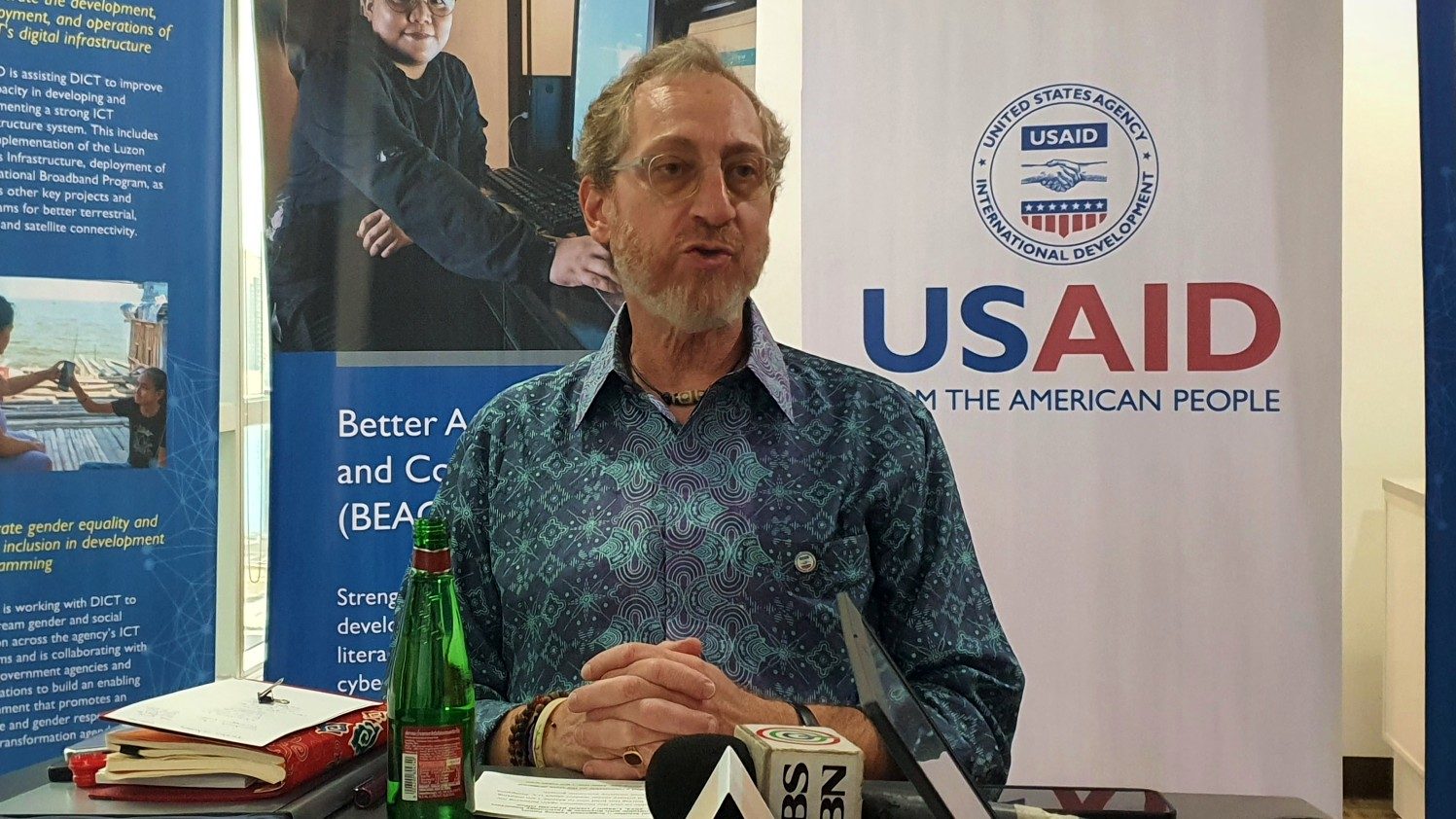SUMMARY
This is AI generated summarization, which may have errors. For context, always refer to the full article.

MANILA, Philippines – The United States Agency for International Development (USAID) on Tuesday, November 7, underscored how Open Radio Access Network (ORAN) technology enables “a more stable and secure architecture that is able to withstand threats from a variety of sources, be they state-sponsored actors or be they private cyber criminals and individuals.”
ORAN is a newer approach to cellular networks, wherein network components from different brands or suppliers will be able to work with one another. The approach would allow telcos to lessen their reliance on a single vendor in a proprietary environment with little compatibility between different suppliers.
Globe in September 2020 said that about 80% of its network uses Huawei equipment from China, while the remaining 20% are sourced to Sweden’s Ericsson and Finland’s Nokia. Smart uses a combination of Huawei and Ericsson but the usage percentages are unclear.
Huawei remains in the scope of the US as a potential security threat, as well as other western countries such as Britain, France, and Sweden, and has been put under limits and bans as far as network equipment for their domestic telcos are concerned.
The promotion of ORAN architecture, in theory, would allow Philippine communications service providers to have more diverse choices for network components.
Smart, earlier in January, announced it was the first to successfully demo ORAN in the country, saying “ORAN will also provide Smart with a vast ecosystem with more choices and deployment options. The same vast ecosystem is expected to lower prices due to increased competition and further foster innovations in the industry.”
Said Michael Schiffer, assistant administrator for USAID in Asia, “We think that [ORAN] provides a robust architecture that is necessary to build a reliable digital standard given the threats that we’re facing.”
Part of aid program
The USAID’s ORAN initiatives are part of US President Joe Biden’s announcement in May 2023 to provide $135 million to the Philippines, along with other programs in the health, mineral processing, infrastructure, sustainability, and education sectors.
The core of the initiative is the planned rollout of a brick-and-mortar ORAN Interoperability Lab to “advance the Philippines’ 5G rollout, strengthen its innovation economy, and provide digital upskilling opportunities to Philippine workers” and “teach and educate local engineers in how to design, build, and operate these networks,” the press release said.
The lab will be working with universities, telcos, and international tech firms.
There is a shortage of cybersecurity professionals in the country, and Schiffer said that with the lab, “That’s something we want to help address. That sort of investment in the Filipino people, your 5G workforce, is precisely one of the things that the ORAN academy is designed to address.”
While Schiffer calls ORAN “robust,” the architecture will still have to prove itself. A May 2022 study by the EU, said that the technology gains points for “Visibility of the network thanks to the use of open standards and open interfaces, which could also facilitate auditing and security testing.”
But it also highlighted several risks such as giving more entry points for malicious actors due to an increased number of suppliers, risks of misconfiguration and complex interoperability leading to failures, and technical specifications that are “not sufficiently mature.”
These are risks that come with new, unproven technologies, and Schiffer said that it’s the establishment of the lab that will enable stakeholders to “start running field tests” to establish “the aspirational goals for the server architecture, and the security of ORAN.”
“If a state-sponsored actor targeting the Philippines were to find a vulnerable pathway [from the Philippines and through to the US], that’s a concern as well, so we have to make sure that we’re helping to safeguard and mitigate for you.” – Rappler.com
Add a comment
How does this make you feel?






There are no comments yet. Add your comment to start the conversation.